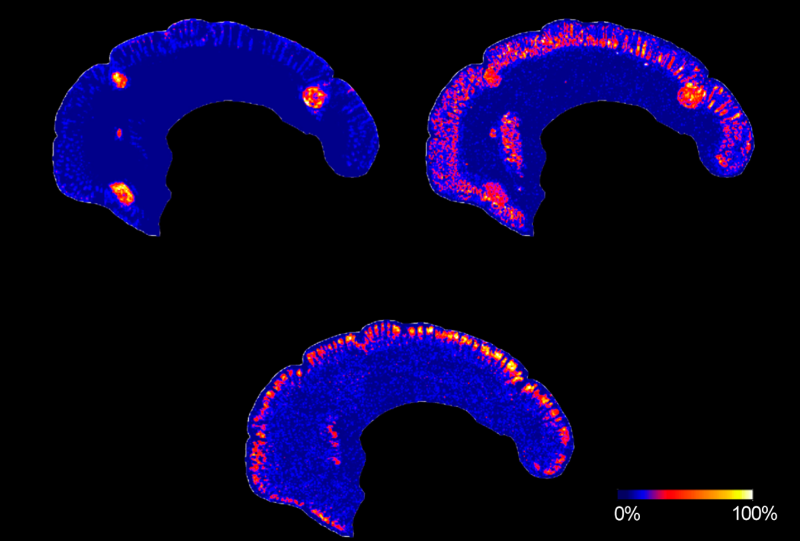Matthias Holzlechner, Katharina Strasser, Elitsa Zareva, Luise Steinhäuser, Hanna Birnleitner, Andrea Beer, Michael Bergmann, Rudolf Oehler, and Martina Marchetti-Deschmann
J. Proteome Res., 2017, 16 (1), pp 65–76
Tissue-resident immune cells differ from their corresponding blood cells in many functional aspects. Although the proteome of blood immune cells has been well-investigated, there are almost no data on tissue-resident immune cells. Here, we explored the potential of using MALDI-TOF-MS imaging (MSI) to investigate these cells in colon tissue, which exhibits a strong infiltration of immune cells. MSI identified several proteinaceous markers that colocalized with specific structures of the colon, such as mucosa or muscularis mucosae, in six patients. In addition, we showed that certain m/z values have the same spatial distribution as CD3+ T lymphocytes in the lymphoid follicular structures or as CD206+ macrophages in the lamina propria. For further corroboration, blood lymphocytes and monocytes from 10 healthy volunteers were analyzed by intact cell mass spectrometry (ICMS). Furthermore, we analyzed monocyte-derived macrophages that had been polarized in vitro into proinflammatory M1 and anti-inflammatory M2 phenotypes. The mass spectra differed clearly among all immune cell types. Additionally, it was found that distinct signals from ICMS analysis were identical to the m/z values found in the MSI experiment in lymphoid follicular structures. These data show for the first time that MSI is well-suited to visualize the spatial distribution of immune cells in human colon tissue. We consider MALDI mass spectrometry imaging to be a technique with high potential for use in rapid investigations of tissue-specific features of cells.


No responses yet